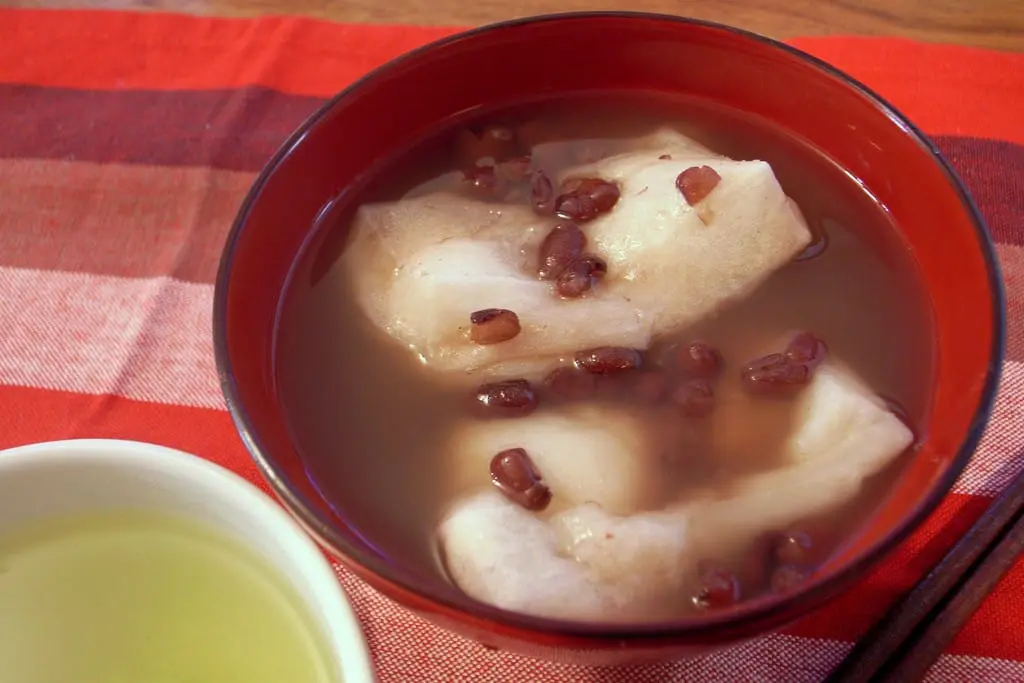Kagami Mochi - Japanese Encyclopedia

Kagami mochi is an annual New Year's decoration in Japan. It consists of two mounds of mochi topped with a bitter orange and displayed inside the household. This article will explain how to arrange it in your home to attract good luck and happiness in the new year.
Kagami mochi is a glutinous rice cake offered to Toshigamisama, the deity of the New Year. The offering is typically prepared at the end of the previous year. The tradition of displaying two mounds of mochi topped with a bitter orange is believed to have begun in the 14th century.
How to Create an Offering of Kagami Mochi
Kagami mochi is generally displayed with two layers of flattened mochi cakes with a daidai citrus fruit—somewhat larger than a mandarin orange—on top.
Depending on the region, the rice cakes are decorated with auspicious food, including dried konbu seaweed, umeboshi (pickled plum), or even delicacies from the mountains or sea, such as prawns.
The kagami mochi is displayed on a stand called a sanpo. If you don't have one on hand, a tray will also work fine.
The daidai with an attached leaf was chosen because once a tree bears this citrus fruit, it won't fall for two to three years. Therefore, the daidai symbolizes longevity and the pronunciation of the word even means "many generations." Of course, you can also use a mandarin orange in exchange.
Kagami Biraki: A Custom of Cracking the Kagami-Mochi Cakes
Kagami mochi is traditionally displayed from December 28 until the new year.
It's advised not to arrange any New Year's decorations on December 29 because the number nine (or "ku") can be read as "suffering." Additionally, December 31 is another date to avoid since it's considered last-minute.
The day of kagami biraki ("cracking the kagami mochi") is traditionally held on January 11 throughout Japan. Participants crack the rice cakes into small pieces and eat them in a New Year's soup called ozoni. While the recipe varies by region, key ingredients include winter vegetables like daikon (Japanese radish), carrots, and satoimo (taro).

Photo by yoppy
The mochi cakes can also be served in a sweet azuki bean-paste soup called oshiruko.
Nowadays, you can easily find packaged kagami mochi products that are pre-molded and ready for display. Although it was customary for households to make handmade mochi, modern times have made it more convenient to partake in year-end traditions.
ライター兼翻訳者、時にマーケティング調査員の顔も。訪日旅行客向けに東京都内レストランメニューの翻訳データ・ベースの作成や、宿・ホテル情報検索サイトの翻訳も手掛けてきました。旅行と食材研究が趣味です。



































![[JR KYUSHU HOTEL Blossom Oita] A hotel directly connected to Oita Station - A comprehensive guide to access!](https://resources.matcha-jp.com/resize/720x2000/2025/10/23-247814.webp)

![Deep dive into Japanese brands! A tour of famous leather shoe stores with GENSEI & Nin [Harta Edition]](https://resources.matcha-jp.com/resize/720x2000/2025/12/18-253277.webp)
